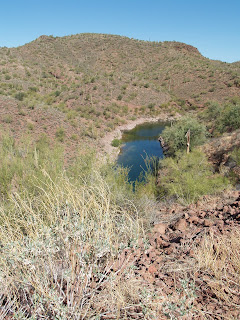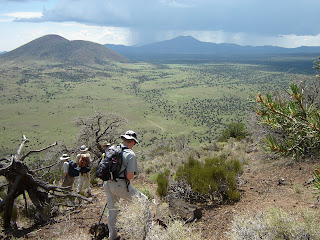


 EAST WEBBER TRAIL #289
Tonto National Forest
EAST WEBBER TRAIL #289
Tonto National Forest
Woodsy and cool, little-used East Webber trail cuts a thin path through a shady pine forest that culminates at an array of springs where icy water gushes from a canyon wall at the base of the Mogollon Rim. The first three miles of the hike follow pine-shaded, connecting trails that skirt the perimeter of Boy Scout Camp Geronimo. Once past the camp, the trail transitions from a pleasant walk in the forest to a fascinating streamside exploration. Hugging the banks of Webber Creek for its entire length, the East Webber trail presents a variety of fun, water-themed adventures. At least a dozen creek crossings define the hike. Some involve walking across fallen logs while others require stone-hopping or ankle-deep wading. As the trail plows deeper into the forests beneath the Rim, temperatures drop and the canopy funnels sunlight into narrow beams that play upon the crystal clear waters and abundant riparian vegetation. Columbine, wild raspberry and yellow monkey flowers bob along the water’s edge adding splashes of color to the shimmering, golden-brown gravel of the streambed. Near the end of the trail, the path gets very steep and difficult to follow. However, it’s well worth the effort to follow the sound of rushing water (and the orange trail tape placed by the scouts) up the canyon to visit the springs where silken sheets of fresh, white water spill over tufts of vibrant green grasses into the creek below.
LENGTH: 9.8 miles out-and-back to the springs
RATING: moderate (difficult in the last mile)
ELEVATION GAIN: 1,060 feet
GETTING THERE:
From Phoenix, go north on Highway 87 for about 90 miles to the town of Payson. From Payson, continue north on Highway 87 for about 12 miles to “Control Road” (Forest Road 64) near milepost 265 on the right (a couple miles past Tonto Natural Bridge State Park). Turn right onto FR-64 and continue for 6 miles to Webber Creek Road (Forest Road 440). Turn left (north) onto FR-440 and go 2 more miles to the signed Geronimo trailhead on the left. No facilities.
HIKE DIRECTIONS:
This hike involves connecting three trails and because the route requires mucking through a quagmire of old roads, spur paths, confusing junctions and crappy signage; this hike is not a good choice for the directionally-challenged. Here’s the plan:
From the trailhead, HIKE ACROSS FR-440 and connect to Highline Trail #31 (west side of the road across from the main Geromino trailhead sign).
Cross the creek and follow Highline #31 for several yards to a junction sign—veer right and continue uphill roughly 0.15 mile to a 3-way junction. There are no signs here. Directly ahead, the road dips downhill heading towards a gate---this leads to the scout camp, do not take this road. Instead, veer left where you have 2 choices. The footpath heading uphill is the continuation of #31 and is marked by white diamonds—this path will intersect the Geronimo Trail in about 0.1 mile. The wider road to the far left is the Geromino Trail #240 proper. Either option works. Once on Geronimo, follow this wide old road (stay on the main road, ignore the many cross roads) to another 3-way junction. This one has two signs, one for East Webber and another for West Webber, Turkey Spring and FR 218.
(UPDATE: on 8-26-12 a hiker reported to me that that this 3-way sign is missing. If you can can confirm, please leave a comment.) Head right here and begin climbing following the blue diamonds until you reach a fancy wooden “Webber” sign. From here, follow the yellow markers for East Webber #289. The path is usually clear enough to easily hike 1.5 miles. After that though, be prepared to work through downed trees and overgrown brush to get to the springs.
NOTE: s
ome outdated books and online sources wrongly state that the East Webber Trail may be accessed by hiking through Boy Scout Camp Geronimo. The camp is private property, do not trespass.
MORE PHOTOS:
http://www.facebook.com/media/set/?set=a.3069354351581.99739.1795269672&type=1&l=3abd3b8819
























































